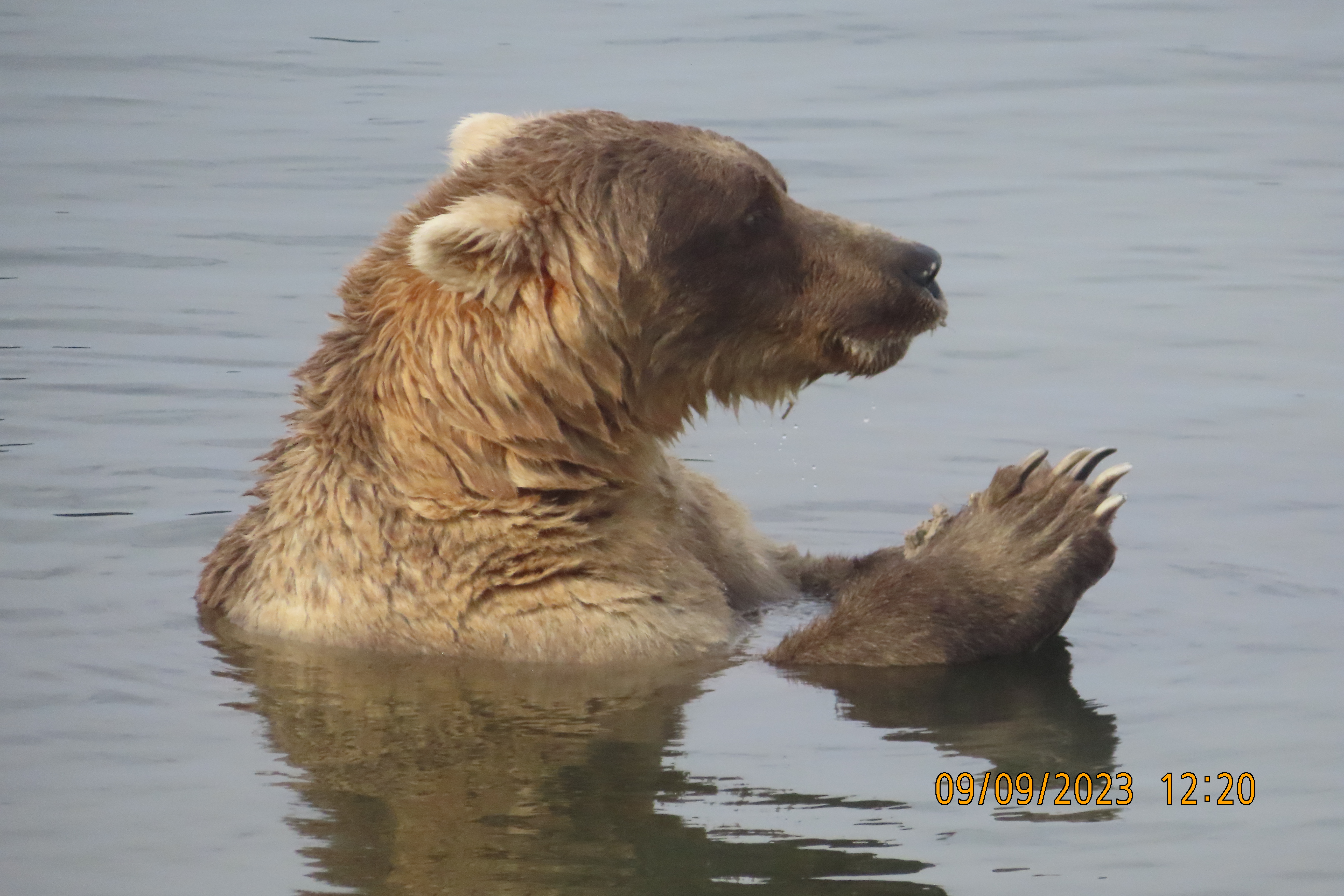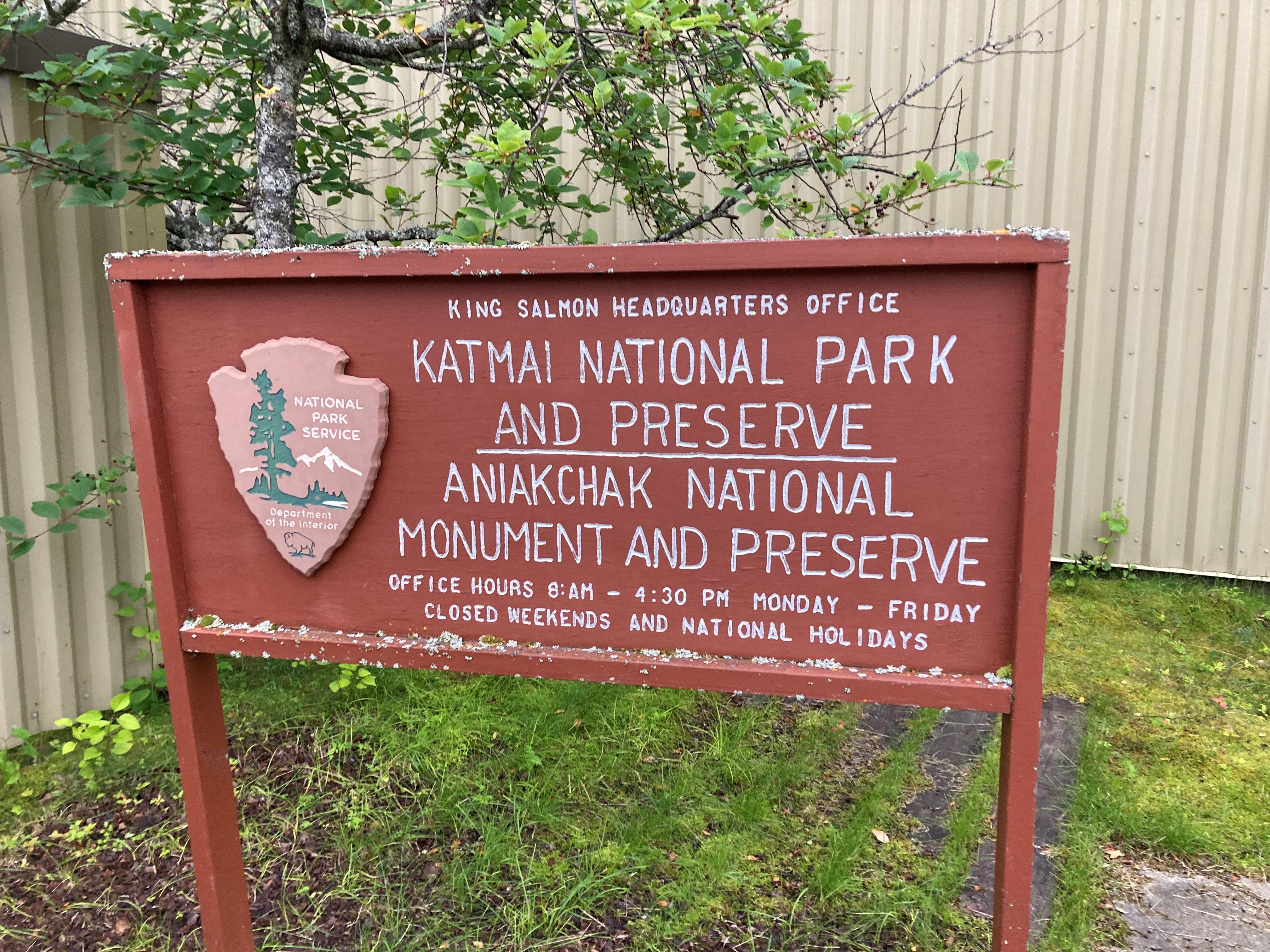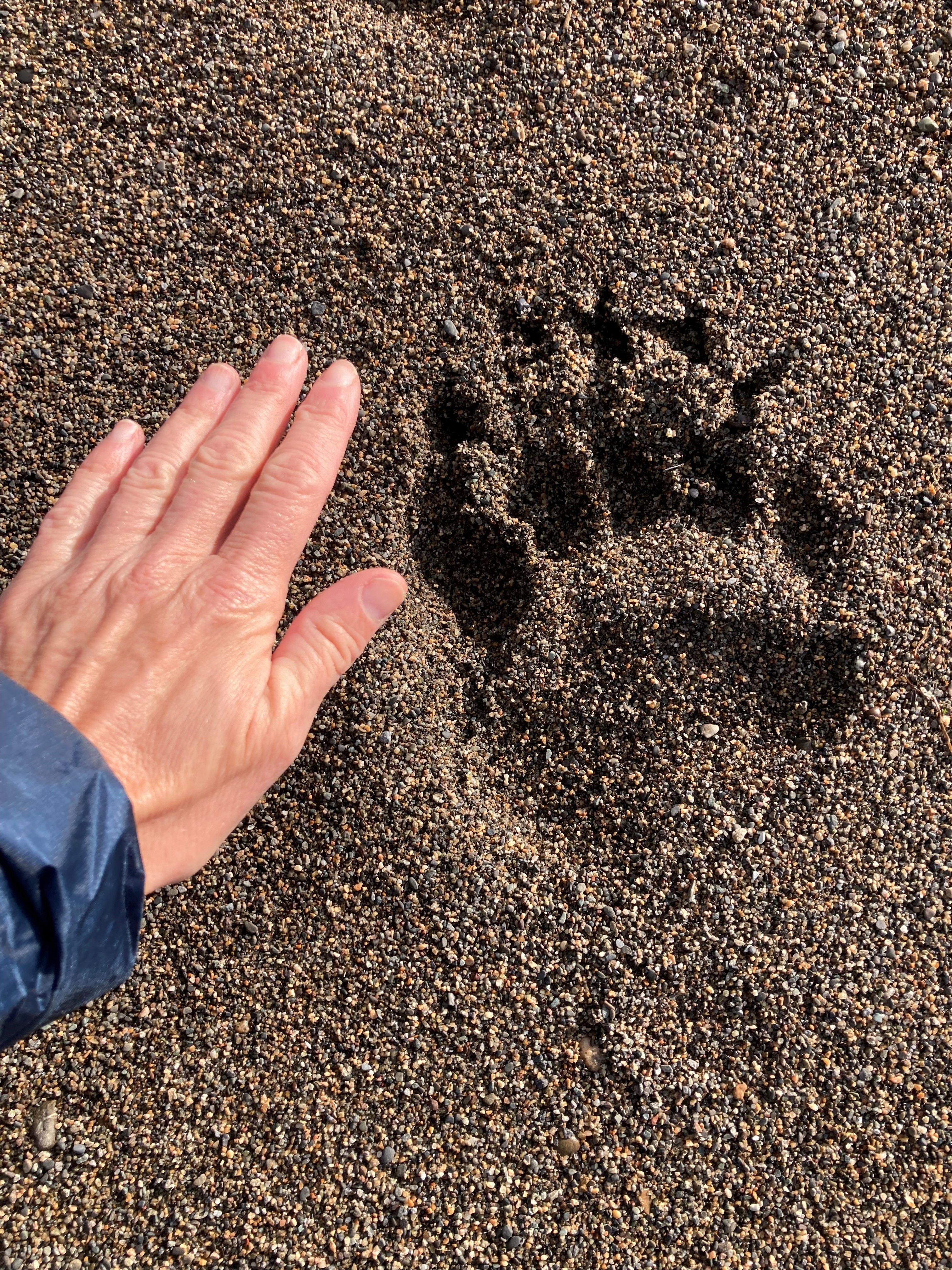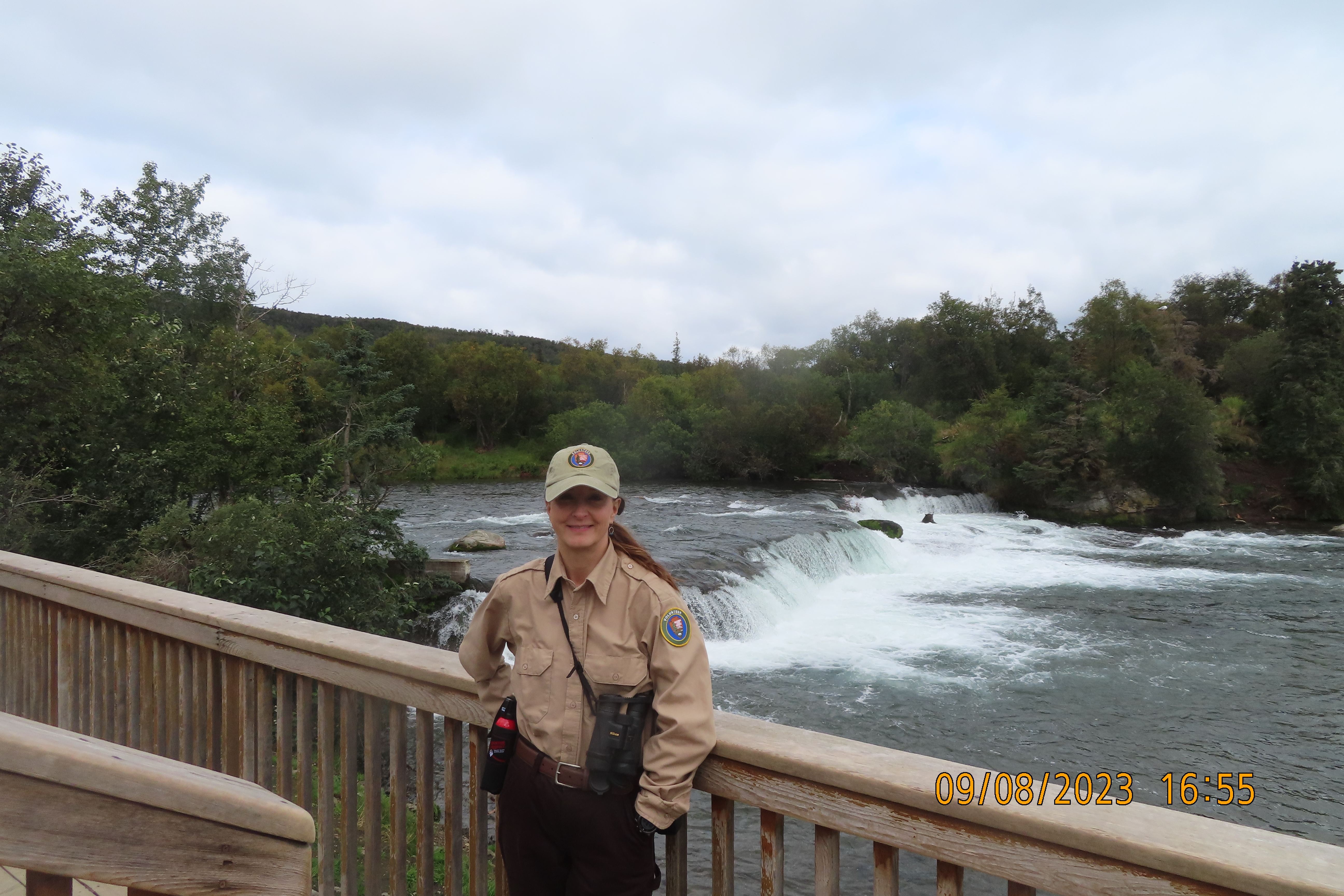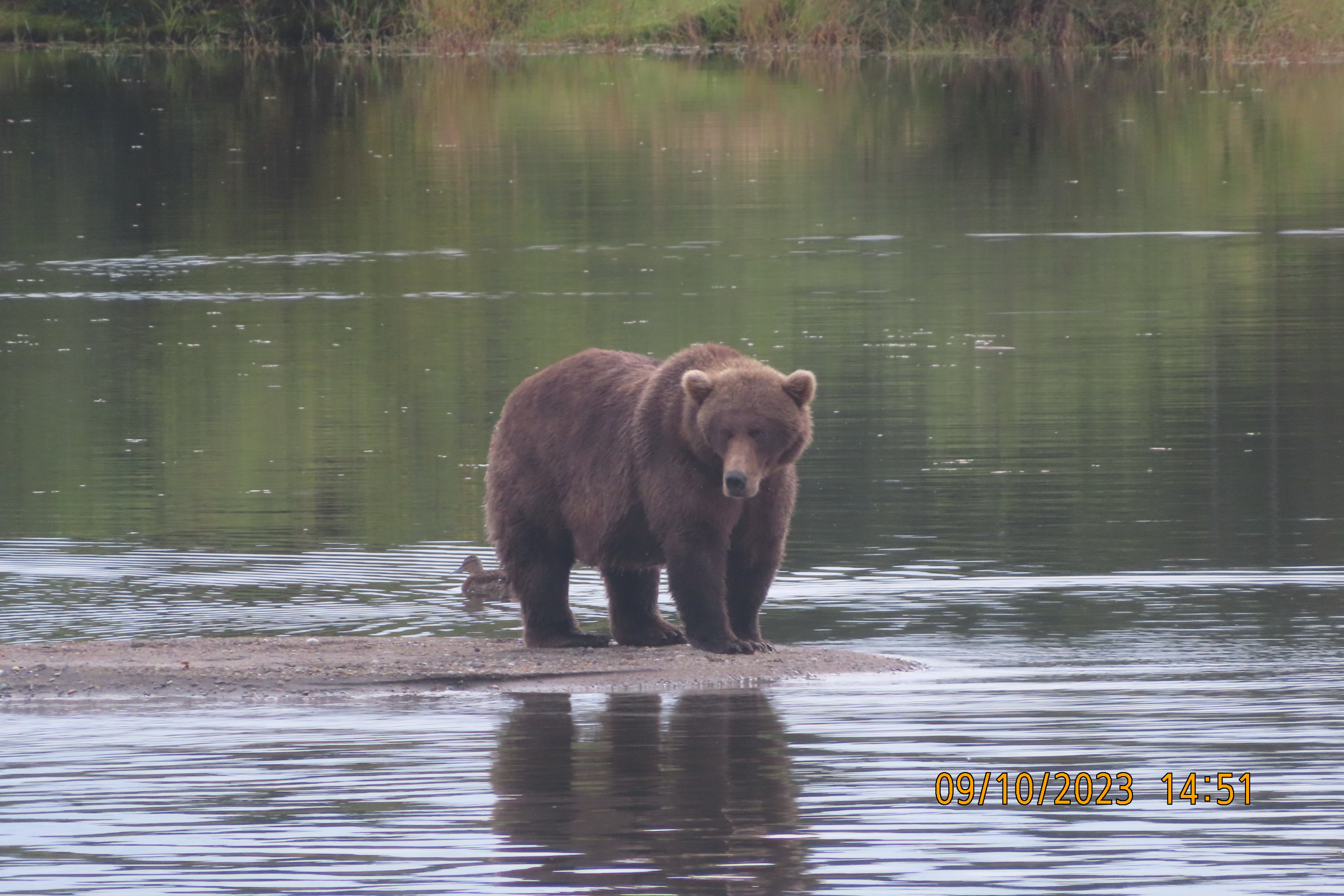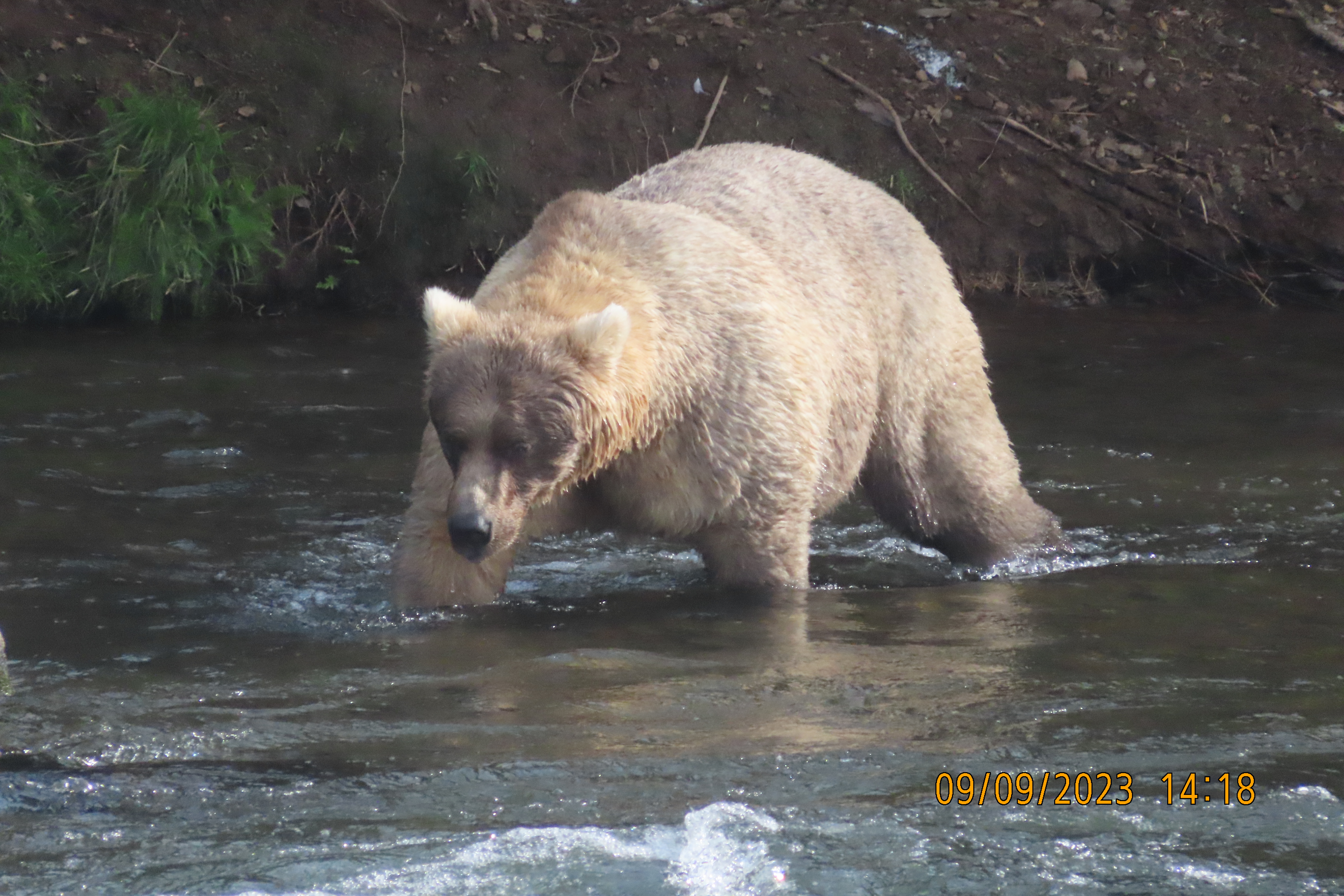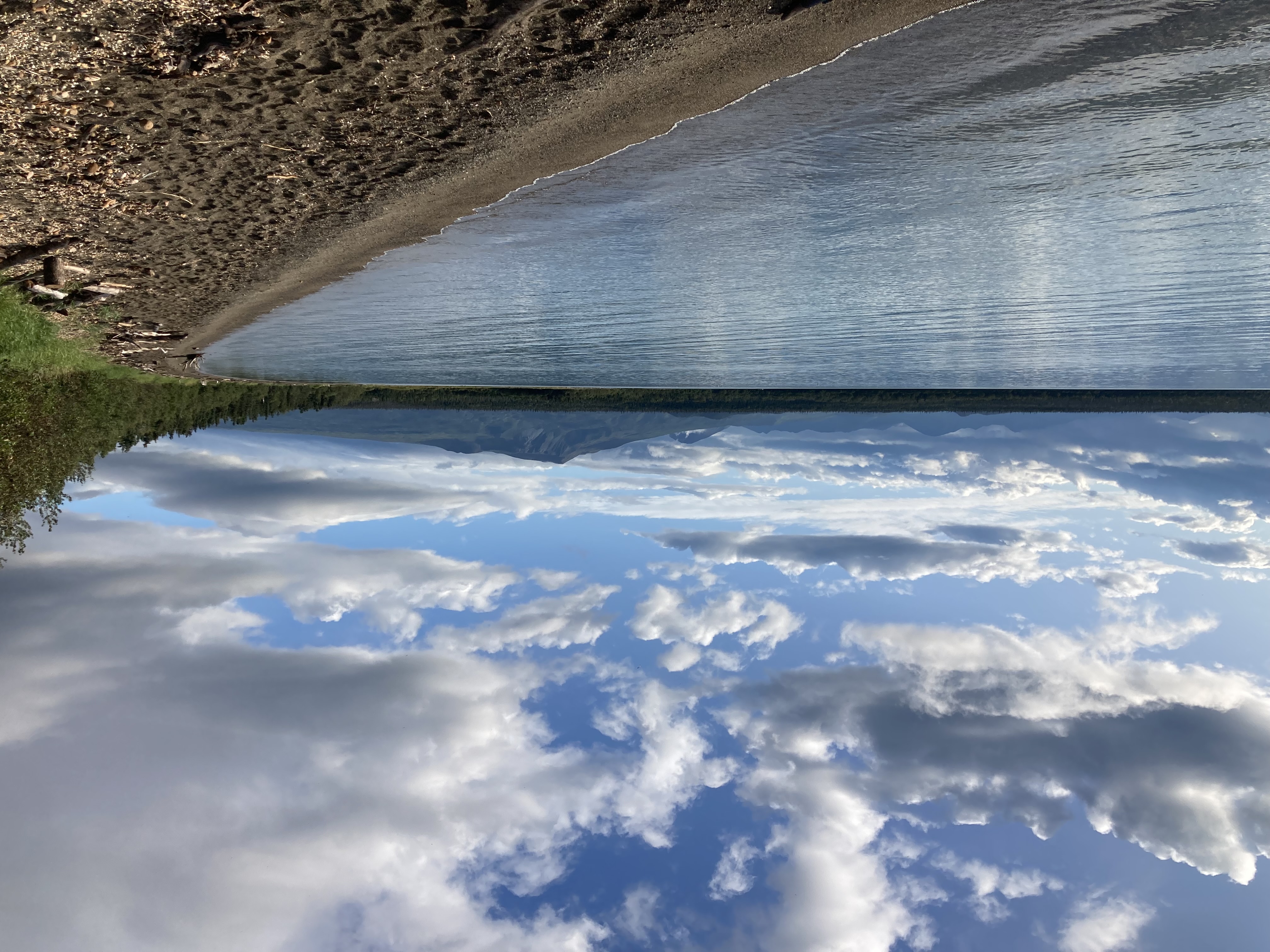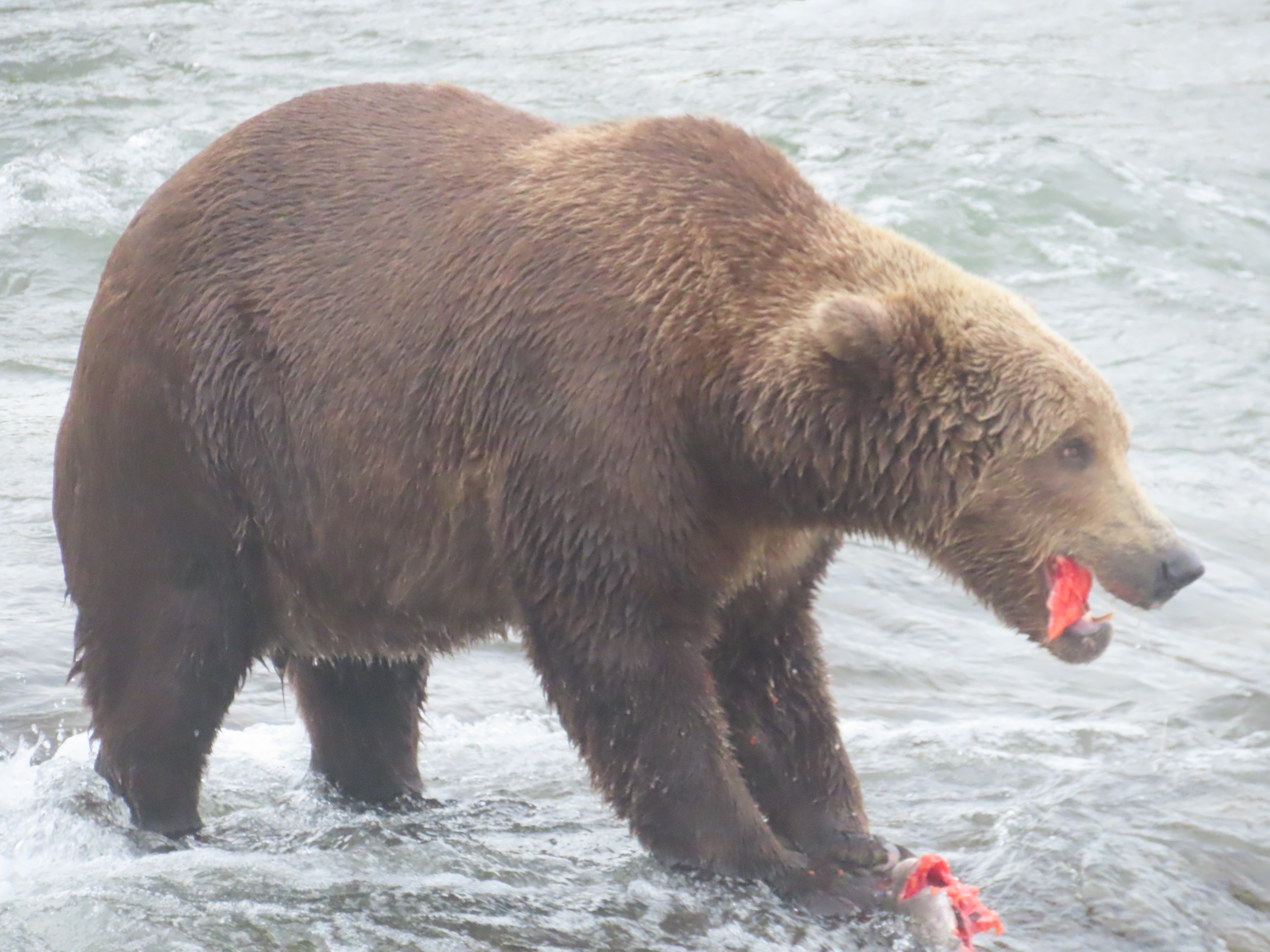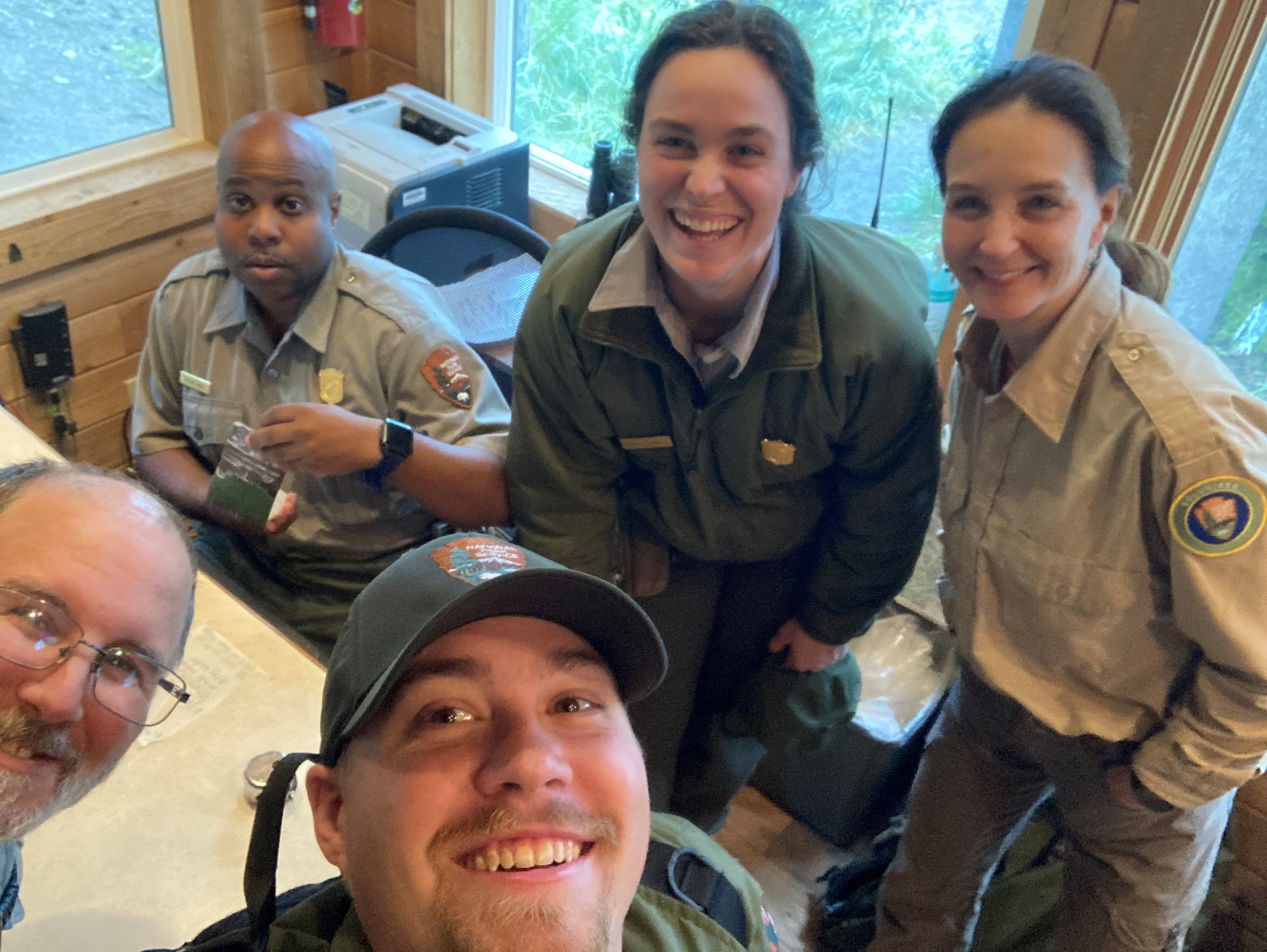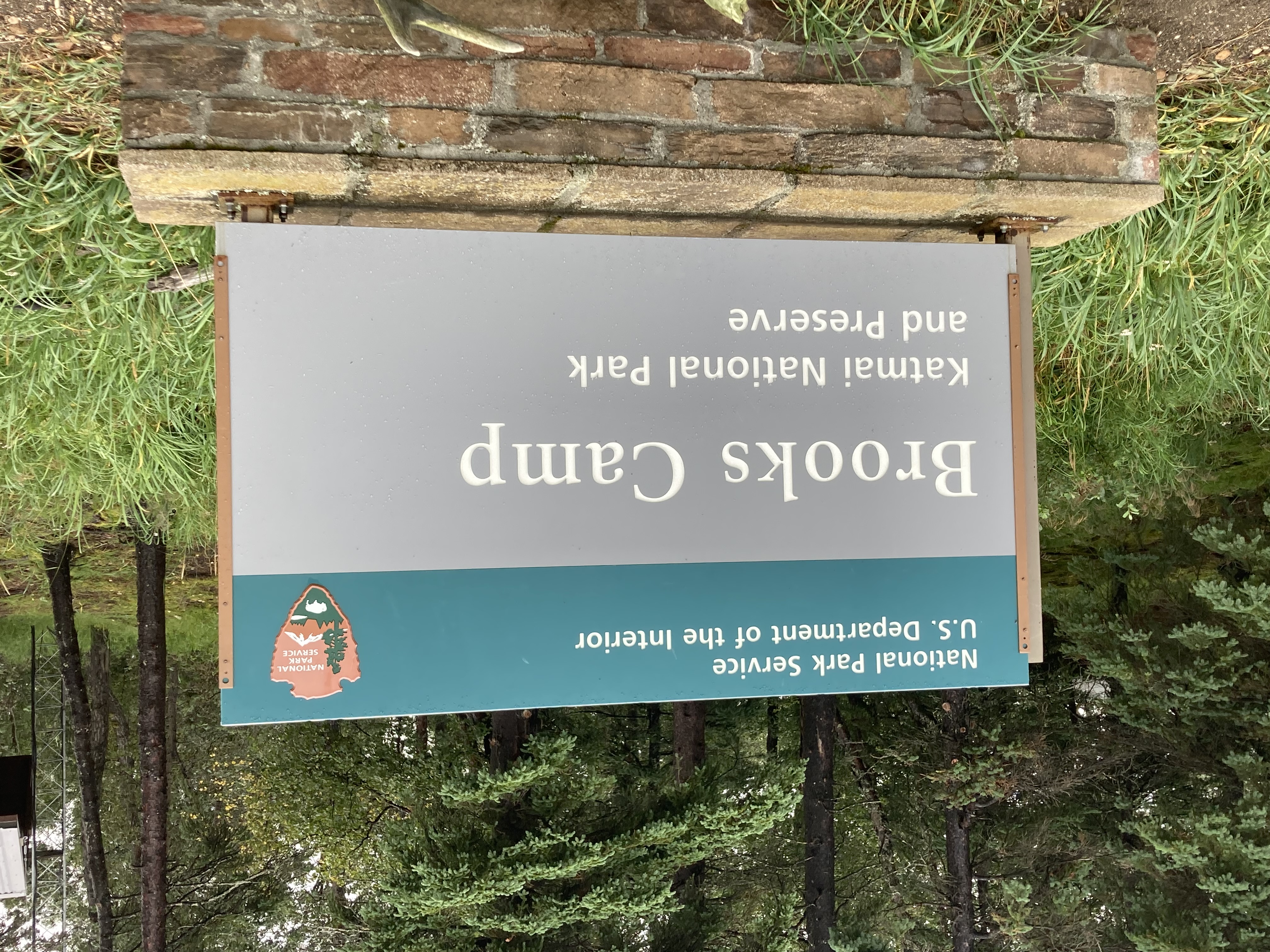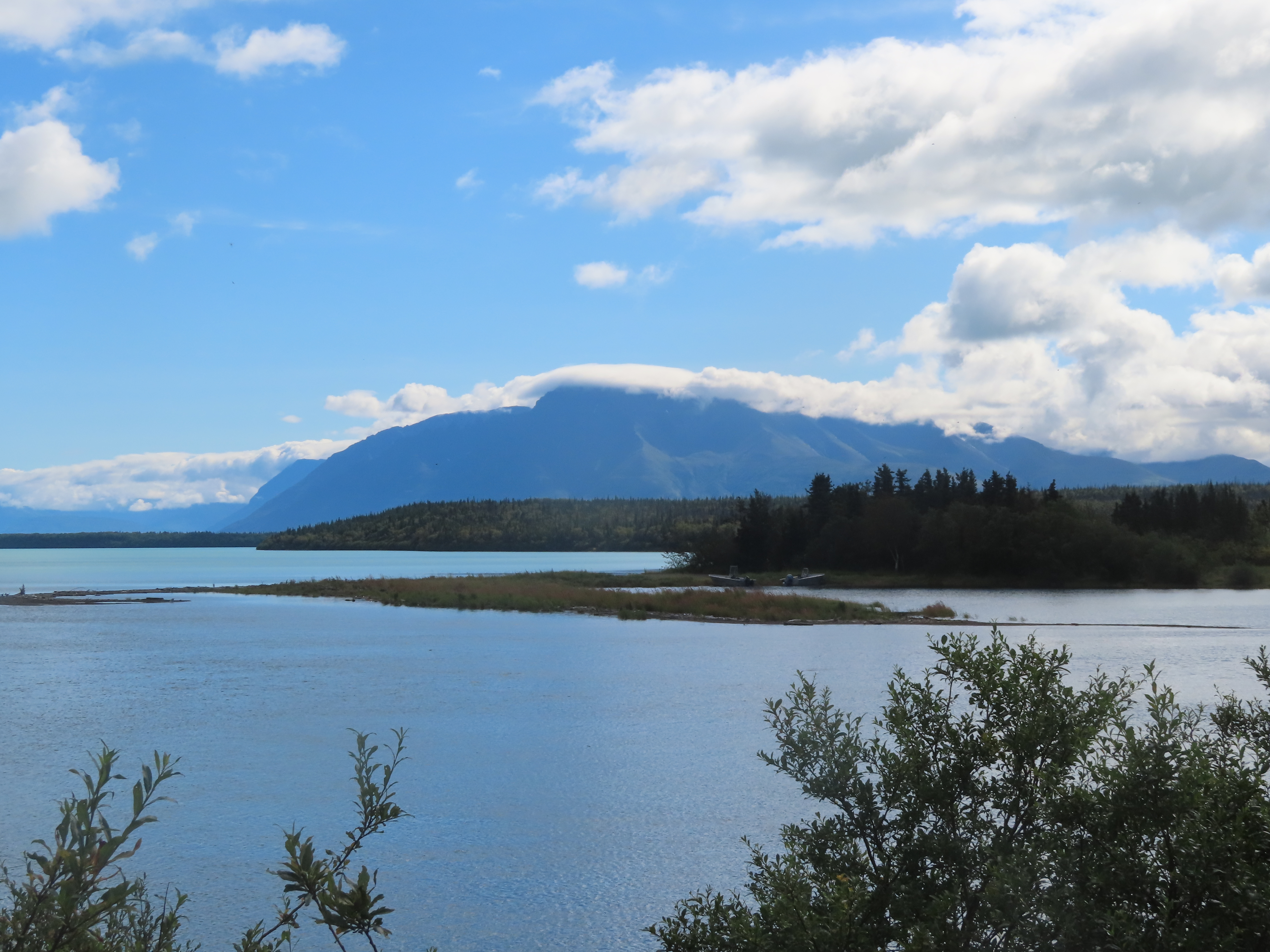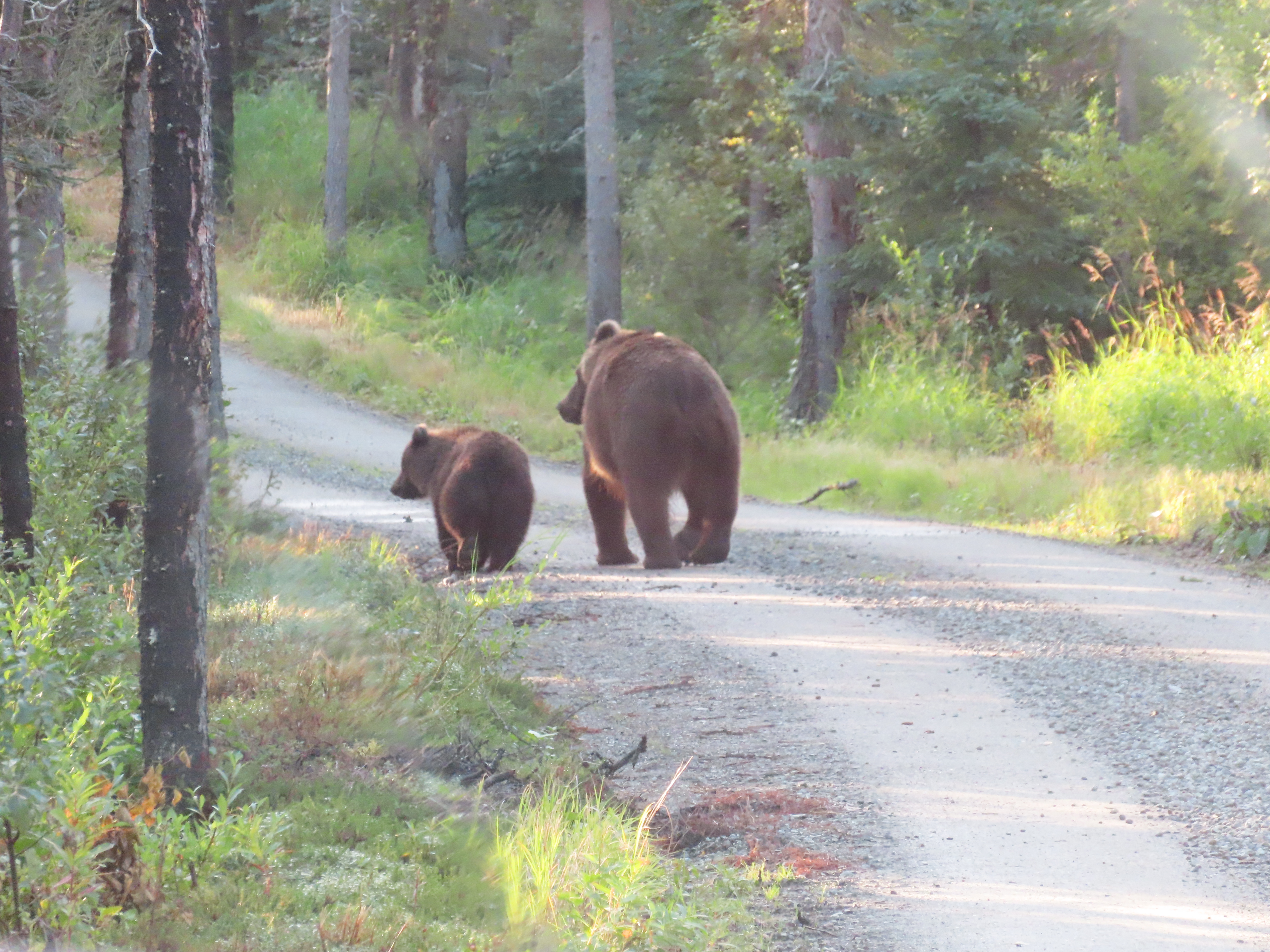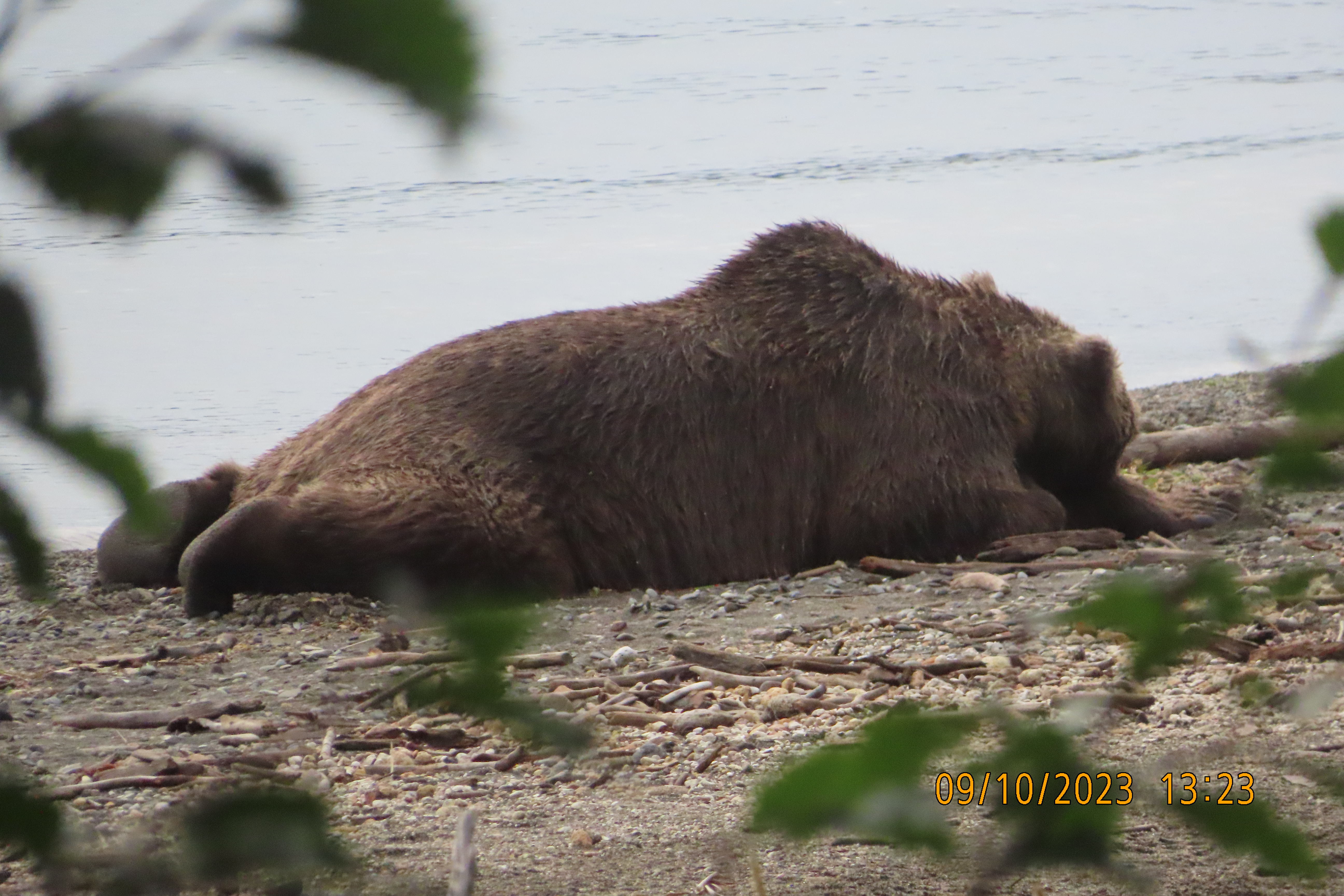Living Among Brown Bears at Katmai National Park and Preserve
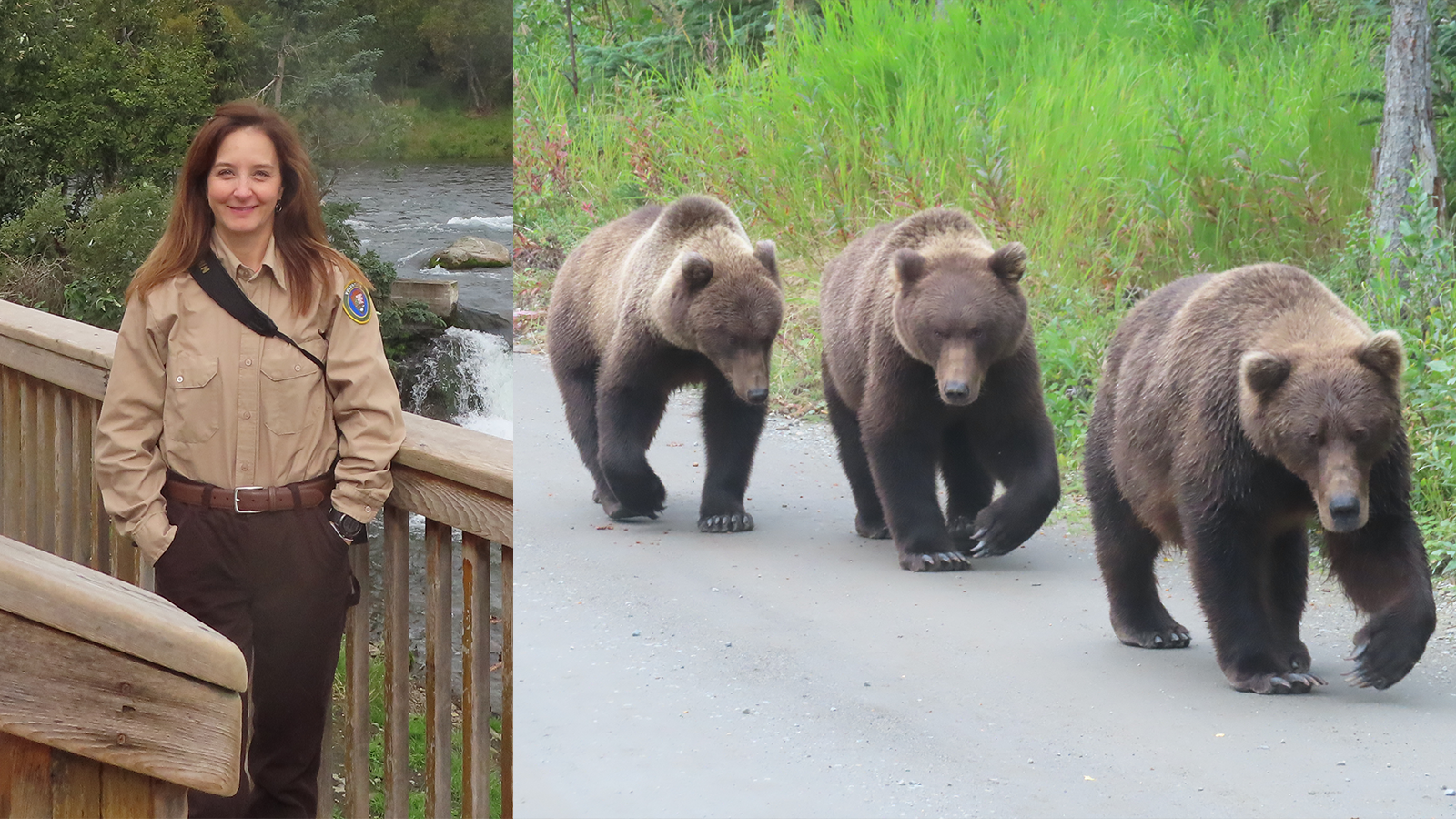
This past summer, while so many of us gushed over Baylor University’s two American black bear cubs moving into their home on campus, Kelli McMahan, PhD, CTRS, was stationed in Alaska’s Katmai National Park and Preserve (Katmai) observing coastal brown bears in their natural habitat as she immersed herself in the inner workings of the National Park Service.
McMahan is an Associate Clinical Professor for the Department of Health, Human Performance, and Recreation (HHPR), within the Robbins College of Health and Human Sciences. She is also HHPR’s Coordinator of Outdoor Education and Leadership.
Katmai National Park and Preserve
Located in the northern Alaska Peninsula, Katmai is a remote wilderness area offering protected habitats for sockeye salmon and brown bears.
McMahan’s adventure to this isolated destination required detailed planning. The area lacks cell phone service and Wi-Fi, and there are no roads connecting the park to the rest of Alaska. Due to its remoteness, visitors must taxi by small plane or boat to the park.
“I was in Alaska for a little over three weeks,” McMahan said. “You must get there a little ahead of time because weather dictates when you can make the journey from King Salmon. I also had to plan out all my food because there are no grocery stores once you arrive at Brooks Camp."
Visitors and scientists alike can safely observe an estimated 2,200 brown bears in their natural habitat in Katmai. In the summer months, the brown bears congregate near Brooks Camp and feast on migrating sockeye salmon.
“You've seen the iconic pictures of the big brown bears standing over the falls with fish trying to jump over the falls and continue swimming upstream—that's where this was,” McMahan said. “So many times, on my way to the viewing areas, there would be a 700+ pound bear sleeping on the side of the trail. Sometimes they will sleep upside down, with their paws up. They're not hungry—they've eaten so much that they just can't even move.”
A Seasonal "Intern"
McMahan found herself in Katmai after earning a seasonal volunteer position with the National Park Service and was stationed in Alaska as a volunteer interpretive ranger. In this role, which closely resembles a park ranger, she created bear orientation videos, spoke with guests, roved the park, and worked in the bookstore.
“It was amazing,” McMahan said. “I have this affection for federal land management agencies, and for the park service, so it was a great professional development opportunity.”
For McMahan, the job in Katmai allowed her to combine a desire for professional development, a personal love for the National Park System, and a time to brainstorm research opportunities.
“Practically every day in class since I've been back at Baylor, I've referenced my experience there, and I can talk with more credibility to my students about all the options available to them,” McMahan said. “It gives me this insider knowledge, as a clinical faculty member, to really encourage students about what is possible. It’s from firsthand experience about what it's like to be a ranger because I did everything that a park ranger would do, but as a volunteer and not getting paid.”
Brown Bear Conservation, Respect, and Human Behavior
Live-feed cameras, better known by a cult following as “bear cams,” are installed throughout the Katmai parkland. This type of accessibility allows people from all over the world to virtually observe the brown bears in their natural habitat, without having to navigate the expensive and unique travel to Alaska.
“It’s fascinating, so, so fascinating,” McMahan said. “People watching online can get very attached to the bears, by name. Some people travel to Brooks Camp, specifically looking for their bears. They ask, ‘Where's Holly? Where's Otis?’”
In early October, Katmai hosts “Fat Bear Week,” when people vote for their favorite brown bear, as they fatten up on salmon and berries to prepare for hibernation. In 2022, more than 1 million votes were tallied. Park rangers see the week as an opportunity to promote conservation.
McMahan wonders if the constant accessibility desensitizes and blurs the lines in people’s understanding of conservation. After all, Katmai is a place for wildlife to roam freely—it is not a zoo, yet park rangers often must explain why they do not step in when a bear has an injury or ages closer to death.
“One lady was concerned about Otis, who's very old,” McMahan said. “She suggested that because everyone loves Otis, we should put Otis in a sanctuary. I explained to her that these bears are wild, and they live their whole life here. It would be inhumane to pick them up and put them in another environment.”
Since the brown bears roam freely, all visitors are required to attend a bear safety orientation. Encounters are likely, and McMahan treasures the interactions she had.
“This actually happened a few times—I was walking to work, and a bear was walking towards me,” McMahan said. “You can't get the recommended 50 yards away in that particular part of the park because of the forest growth, so you just do the best you can. I just got off the trail, and let it go by. I'm talking to the bear—I'm like ‘OK, I need you to keep going. This is not a time to eat berries because I need to get to work!’”
She is interested in how various encounters, at different parks, might possibly affect a person’s overall behavior around bears. For example, the brown bears at Katmai are well-nourished, uninterested in people due to the ready food source, and concentrated in high numbers.
“How are people translating this experience, in this very unique environment, to other bear habitats?” McMahan said.
Inspiring the Next Generation
Many HHPR students who earn their degree in Recreation and Leisure Services with a concentration in Outdoor Recreation and Leadership seek internships or job opportunities within state and national park lands. Through McMahan’s trip to Alaska, she gained valuable insight in working for federal land management agencies.
Katmai itself provides ample job opportunities. For example, McMahan worked alongside administrators, archaeologists, cultural rangers, maintenance workers, media rangers, and wildlife specialists.
“There are job opportunities,” McMahan said. “If you name it, there's a there's a job there for you. It’s a really awesome career.”
While the idea of living and researching amongst Alaska’s wild brown bears may sound intriguing, McMahan cautions the Katmai experience isn’t suited for everyone.
“It takes a special person to work there because it is very remote,” McMahan said. “You're in a confined space for a really long period of time, you must plan your food, and be okay being alone. Because of this, it would have to be the right student—but wow, what an incredible opportunity.”
